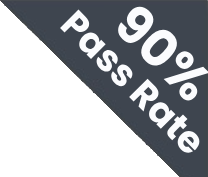Basic Motorcycle Driving Skills
01/38
1.What is the correct method for starting a motorcycle engine?
Riders must pull the clutch lever, switch the key to ON, and press the starter to start the motorcycle safely.
01/38
Progress
Basic Motorcycle Driving Skills
02/38
2.How should a rider use the clutch during takeoff?
Smooth coordination between clutch release and throttle helps prevent engine stalling and ensures balance.
02/38
Progress
Basic Motorcycle Driving Skills
03/38
3.When should the rider shift into second gear?
Riders must gain speed in first gear before shifting up. Shifting too early can stall the motorcycle.
03/38
Progress
Basic Motorcycle Driving Skills
04/38
4.What is the correct way to apply brakes?
Using both brakes together distributes stopping force. It increases safety and shortens the stopping distance.
04/38
Progress
Basic Motorcycle Driving Skills
05/38
5.How should a rider handle a slow-speed U-turn?
At low speeds, head position and vision help maintain balance. Looking through the turn improves control.
05/38
Progress
Basic Motorcycle Driving Skills
06/38
6.What helps in maintaining balance at very slow speeds?
Using the clutch in friction zone with slight rear brake provides stability while riding slowly.
06/38
Progress
Basic Motorcycle Driving Skills
07/38
7.Why is it important to downshift before a turn?
Downshifting before a turn allows better control and immediate power when exiting the curve.
07/38
Progress
Basic Motorcycle Driving Skills
08/38
8.What must a rider do before stopping completely?
Pulling in the clutch and shifting to first prepares the rider for immediate restart after the stop.
08/38
Progress
Basic Motorcycle Driving Skills
09/38
9.When riding on gravel or loose surfaces, what is the correct action?
On loose surfaces, riding slow and avoiding sudden inputs helps maintain stability and prevents sliding.
09/38
Progress
Basic Motorcycle Driving Skills
010/38
10.Why should you keep your knees against the tank while riding?
Keeping knees in close stabilizes the body and bike, especially during turns and rough patches.
010/38
Progress
Basic Motorcycle Driving Skills
011/38
11.When must a rider avoid using the front brake alone?
Using only the front brake in slippery conditions can cause front-wheel lock and loss of balance.
011/38
Progress
Basic Motorcycle Driving Skills
012/38
12.How can a rider prepare for emergency stops?
Practicing emergency braking improves reaction time and control. Use both brakes to stop quickly and safely.
012/38
Progress
Basic Motorcycle Driving Skills
013/38
13.What does keeping your head and eyes up help with?
Looking ahead helps with posture, balance, and quicker reactions while maneuvering.
013/38
Progress
Basic Motorcycle Driving Skills
014/38
14.What is the correct hand position on the handlebars while riding?
A relaxed grip and slightly bent elbows allow smoother control and reduce fatigue during long rides.
014/38
Progress
Basic Motorcycle Driving Skills
015/38
15.How should a rider shift up gears smoothly?
Proper upshifting involves smooth coordination between throttle, clutch, and gear lever to prevent jerking.
015/38
Progress
Basic Motorcycle Driving Skills
016/38
16.What is the role of the friction zone in slow-speed control?
The friction zone allows precise speed control and balance when maneuvering slowly or in traffic.
016/38
Progress
Basic Motorcycle Driving Skills
017/38
17.What is the ideal posture while riding a motorcycle?
An upright and firm posture improves balance, visibility, and reaction to road conditions.
017/38
Progress
Basic Motorcycle Driving Skills
018/38
18.What technique helps control the motorcycle during tight turns?
Counterbalancing by leaning the bike more than the body allows tighter turns at slow speeds.
018/38
Progress
Basic Motorcycle Driving Skills
019/38
19.How should a rider use the throttle during turns?
A steady or slightly increasing throttle helps keep balance and prevents skidding in turns.
019/38
Progress
Basic Motorcycle Driving Skills
020/38
20.What should a rider do after riding through water?
After passing through water, gently applying brakes helps dry them and restores stopping ability.
020/38
Progress
Basic Motorcycle Driving Skills
021/38
21.What does correct lane positioning achieve?
Good lane positioning ensures you are seen and have space to react to hazards.
021/38
Progress
Basic Motorcycle Driving Skills
022/38
22.When should a rider cover the brakes while riding?
Covering the brake near traffic or intersections reduces reaction time and enhances safety.
022/38
Progress
Basic Motorcycle Driving Skills
023/38
23.Why must you avoid locking the wheels while braking?
Locked wheels can cause a skid and loss of control, especially on motorcycles with no ABS.
023/38
Progress
Basic Motorcycle Driving Skills
024/38
24.When should you shift to a lower gear?
Downshifting helps provide engine power during climbs or slows the motorcycle during descents.
024/38
Progress
Basic Motorcycle Driving Skills
025/38
25.What is the purpose of countersteering?
Countersteering involves pushing the handlebar in the opposite direction to initiate a turn at speeds above 20 km/h.
025/38
Progress
Basic Motorcycle Driving Skills
026/38
26.When must a rider check mirrors while riding?
Checking mirrors regularly helps a rider stay aware of vehicles behind and prepare for lane changes or turns.
026/38
Progress
Basic Motorcycle Driving Skills
027/38
27.Why is it important to keep both hands on the handlebars?
Both hands on the handlebars ensure better control over the throttle, clutch, and braking systems.
027/38
Progress
Basic Motorcycle Driving Skills
028/38
28.What is the correct action before making a turn?
Riders must reduce speed, signal early, and check surroundings before any turn for safety.
028/38
Progress
Basic Motorcycle Driving Skills
029/38
29.What is the advantage of riding in a staggered formation in groups?
A staggered riding formation keeps each rider visible and allows enough room for sudden reactions.
029/38
Progress
Basic Motorcycle Driving Skills
030/38
30.What gear is ideal for climbing hills on a motorcycle?
Using a low gear gives more engine power to climb inclines without straining or stalling.
030/38
Progress
Basic Motorcycle Driving Skills
031/38
31.What should you do if your motorcycle starts to wobble?
Staying calm, gripping the bars, and easing off the throttle helps stabilize a wobbling motorcycle.
031/38
Progress
Basic Motorcycle Driving Skills
032/38
32.How do you handle a corner on a wet road?
Entering wet corners slowly and with less lean reduces risk of skidding and improves grip.
032/38
Progress
Basic Motorcycle Driving Skills
033/38
33.What is the best way to stop safely at high speed?
At high speeds, controlled use of both brakes ensures a balanced, safe stop without losing traction.
033/38
Progress
Basic Motorcycle Driving Skills
034/38
34.What happens if a rider constantly rides the clutch?
Riding the clutch keeping it partially engaged increases friction and shortens the clutch’s life.
034/38
Progress
Basic Motorcycle Driving Skills
035/38
35.When should a rider look over their shoulder do a head check?
A head check reveals vehicles in the blind spot not visible in mirrors, making lane changes safer.
035/38
Progress
Basic Motorcycle Driving Skills
036/38
36.What the purpose of using engine braking during deceleration?
Engine braking uses the resistance of the engine to slow down, offering smooth deceleration and more control.
036/38
Progress
Basic Motorcycle Driving Skills
037/38
37.When riding with a passenger, what changes in handling?
Carrying a passenger adds weight, which requires slower acceleration, longer braking, and different cornering technique.
037/38
Progress
Basic Motorcycle Driving Skills
038/38
38.What is the ideal foot position while riding?
Keeping the balls of your feet on the pegs allows better balance, faster reactions, and avoids dragging in turns.
038/38
Progress
Your Progress 0/38
- 1
- 2
- 3
- 4
- 5
- 6
- 7
- 8
- 9
- 10
- 11
- 12
- 13
- 14
- 15
- 16
- 17
- 18
- 19
- 20
- 21
- 22
- 23
- 24
- 25
- 26
- 27
- 28
- 29
- 30
- 31
- 32
- 33
- 34
- 35
- 36
- 37
- 38
0 Correct
x 0 Incorrect
- Passing Score 80%

Ace the DMV Exam on Your First Attempt
Unlimited mock tests
Access Over 1000 Exam Like Questions for Just $3

Ace the DMV Exam on
Your First Attempt

 Pass the Exam Easily with Detailed 3-Level Practice | 1-Day Full Access Free Offer Ends in
Pass the Exam Easily with Detailed 3-Level Practice | 1-Day Full Access Free Offer Ends in


